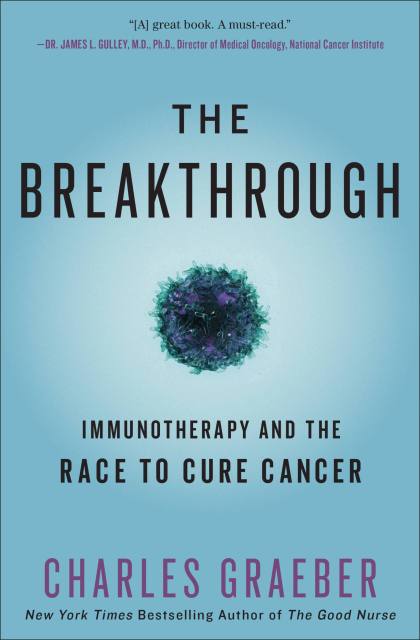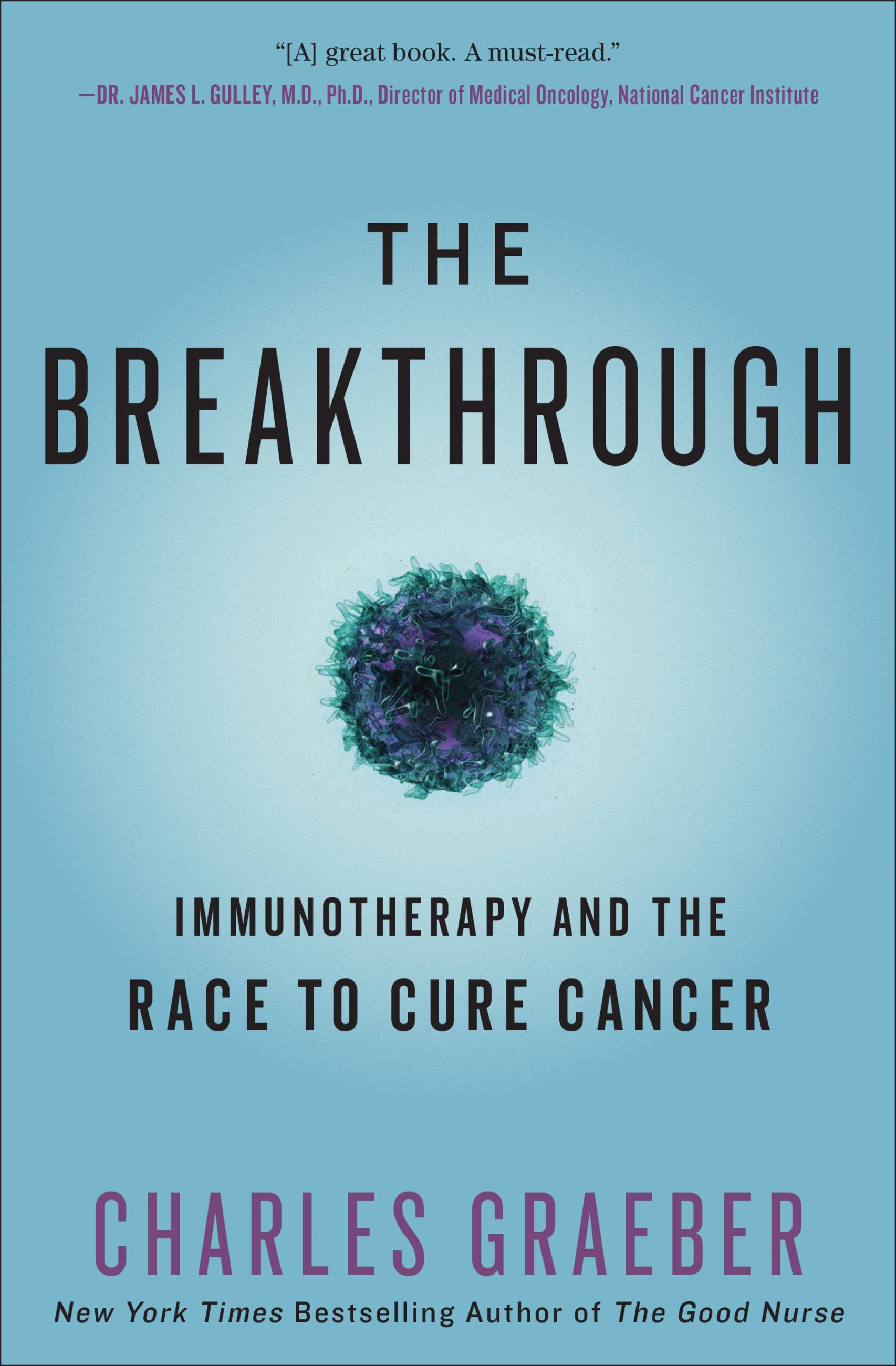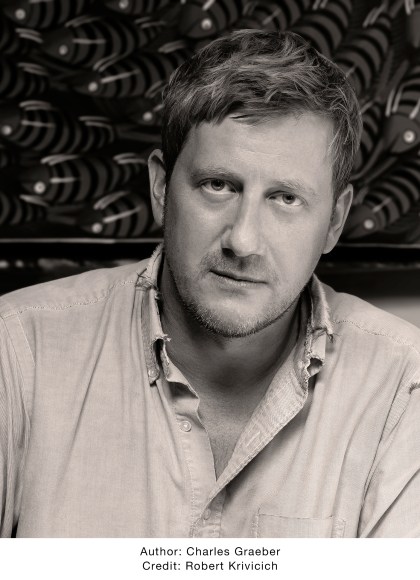Promotion
Use code MOM24 for 20% off site wide + free shipping over $45
The Breakthrough
Immunotherapy and the Race to Cure Cancer
Contributors
Formats and Prices
Price
$14.99Price
$15.99 CADFormat
Format:
- ebook $14.99 $15.99 CAD
- Audiobook Download (Unabridged)
- Trade Paperback $19.99 $25.99 CAD
This item is a preorder. Your payment method will be charged immediately, and the product is expected to ship on or around November 13, 2018. This date is subject to change due to shipping delays beyond our control.
Also available from:
Follow along as this New York Times bestselling author details the astonishing scientific discovery of the code to unleashing the human immune system to fight in this “captivating and heartbreaking” book (The Wall Street Journal).
For decades, scientists have puzzled over one of medicine’s most confounding mysteries: Why doesn’t our immune system recognize and fight cancer the way it does other diseases, like the common cold?
As it turns out, the answer to that question can be traced to a series of tricks that cancer has developed to turn off normal immune responses — tricks that scientists have only recently discovered and learned to defeat. The result is what many are calling cancer’s “penicillin moment,” a revolutionary discovery in our understanding of cancer and how to beat it.
In The Breakthrough, New York Times bestselling author of The Good Nurse Charles Graeber guides readers through the revolutionary scientific research bringing immunotherapy out of the realm of the miraculous and into the forefront of twenty-first-century medical science. As advances in the fields of cancer research and the human immune system continue to fuel a therapeutic arms race among biotech and pharmaceutical research centers around the world, the next step — harnessing the wealth of new information to create modern and more effective patient therapies — is unfolding at an unprecedented pace, rapidly redefining our relationship with this all-too-human disease.
Groundbreaking, riveting, and expertly told, The Breakthrough is the story of the game-changing scientific discoveries that unleash our natural ability to recognize and defeat cancer, as told through the experiences of the patients, physicians, and cancer immunotherapy researchers who are on the front lines. This is the incredible true story of the race to find a cure, a dispatch from the life-changing world of modern oncological science, and a brave new chapter in medical history.
Genre:
-
"The Breakthrough not only provides good background and good understanding for patients, but is also a wonderful read, a book easily picked up but not easily put down -- I'd recommend it for any patient interested in immunology of cancer."Dr. James L. Gulley M.D. Ph.D., Director of Medical Oncology, Cheif of Immunology, National Cancer Institute (NCI), National Institutes of Health (NIH)
-
"THE BREAKTHROUGH artfully traces the history of old and new developments that may have -- finally -- resulted in an actual cure for the most dreaded of all diseases. This book and the advances it describes offer far more than the usual glimmer of hope...Graeber does a good job of hacking through it all, interspersing the medical research with interesting accounts of patients and their determined physicians."The New York Times
-
"A gripping chronicle of the 100-year overnight success of Immunotherapy. For myself and millions of other cancer survivors, THE BREAKTHROUGH is a book of immense and essential hope."Michael Fitzgerald, co-founder and CEO of Submittable and author of Radiant Days
-
"Only Graeber, one of America's greatest non-fiction writers, could take a subject so complex, dense and sprawling and turn it into a rollicking high-tension medical thriller. Masterful."Douglas Rogers, award-winning journalist and author of The Last Resort
-
"There is no villain more ruthless than cancer, which has robbed us all of loved ones who had to endure untold suffering before they succumbed. But after decades of frustration and toil, scientists finally understand how to vanquish the disease by activating the human body's natural defenses. The intimate stories behind this triumph lie at the heart of Charles Graeber's THE BREAKTHROUGH, an expertly crafted and exhilarating account of life-saving ingenuity at its most dazzling. You will never encounter another book so incisive about the art of medical sleuthing, or so poetic about our innate drive to hold on to all that's beautiful in this world for as long as we can."Brendan I. Koerner, Wired contributing editor and author of The Skies Belong to Us
-
"Engaging...In Mr. Graeber's hands, the evolution of immuno-oncology is both captivating and heartbreaking. We are immersed in the stories of the brave, desperate patients who try emerging therapies...We can't fail to see ourselves, our friends and our families in these stories."The Wall Street Journal
-
"Graeber concisely reviews the science of cancer...The risks of tinkering with an intricate immune system are obviously high, even perilous. But the potential reward is a cure. Exciting reading."Booklist
-
"Graeber does it again. He takes a complex topic -- this time advances in cancer treatment -- and weaves an engaging narrative that engages you to the end. With cancer as a leading cause of illness and death, this book is a timely and important account of the challenges and possibilities for new horizons in cancer treatment."Diana J. Mason, PhD, Senior Policy Service Professor (George Washington University School of Nursing),Professor Emerita (Hunter College, City University of New York)
-
"Lucid and informed...Graeber gives readers a basis for both understanding the challenges involved and for cautious optimism that a cure can be found."Publishers Weekly
-
"[A] deft, detailed study of cancer immunotherapy...From the once-discredited pioneer William Coley to immunologist and Nobel laureate James P. Allison, they form a brilliant, driven, admirably stubborn group that Graeber brings vividly to life."Nature
-
"Crisp and suspenseful...an inspiring medical narrative."BBC
-
"Fascinating...[Graeber] weaves human stories with accounts of scientific progress, looking beyond the "cut, burn, and poison techniques" -- surgery, radiation, and chemotherapy -- to focus on the myriad ways the immune system can attack cancer, and provides hope that a cure might not be beyond imagination."The National Book Review
-
"Rare and thrilling...a hopeful, even inspiring, book about cancer."Minneapolis Star Tribune
- On Sale
- Nov 13, 2018
- Page Count
- 320 pages
- Publisher
- Twelve
- ISBN-13
- 9781455568499
Newsletter Signup
By clicking ‘Sign Up,’ I acknowledge that I have read and agree to Hachette Book Group’s Privacy Policy and Terms of Use



